A miniature version of Troy and its past

Troy's former Union Station as it once was -- and still is, in miniature.
Of all the things you might expect to find in the basement of a college dorm, a meticulously-built recreation of 1950s Troy is probably not one of them.
Yet in the basement of RPI's Davison Hall the Rensselaer Model Railroad Society has been constructing a to-scale version of the city and other spots around the region that were connected by rail. The work has been going on for more than three decades -- and it's a sight to see.
There are large-format photos of the display above -- click or scroll all the way up.
This isn't some little circular train layout under a Christmas tree. The tracks stretch across the entire breadth of two large rooms, with miniature cities representing Troy, Cohoes, Saratoga, Lake George, North Bennington, Vergennes, and spots in-between. As far back as 1989 an editor with Model Railroader called the setup "one of the largest, finest, most detailed and historically accurate model railroad layouts anywhere in the world" -- and work has continued since then.
The entire display is made to represent the sections of the the D&H Railroad and the Rutland Railroad in the 1950s, when railroads were at their peak. That time frame also allows a big diversity of train cars since many of the cars used at that time had been manufactured in the 1920s.
My favorite spot on the massive layout is downtown Troy. The centerpiece is the old Troy Union Station, which was located on 6th Ave right near where Uncle Sam Bowling Lanes stands now (a Rensselaer County office building sits on the location). During its peak in 1915, this downtown Troy station had 135 passenger trains come through each day. And service to Albany ran every half hour.
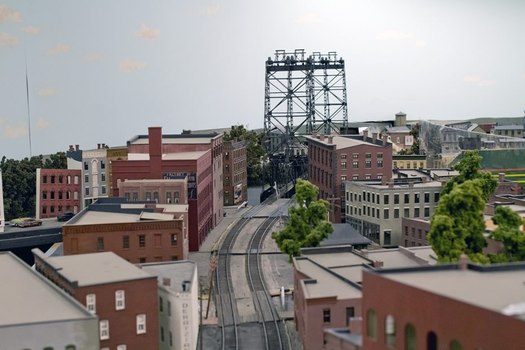
The old Green Island Bridge
The rest of Troy in the setup is mostly recognizable, at least when you have identifiable landmarks like the former version of the Green Island Bridge. The display goes way beyond train tracks to also include period-relevant buildings, people, and vehicles. Everything has been painstakingly researched over the years using old photos, fire insurance maps, and whatever other materials the group can get their hands on.
To make each building based upon how it was over 60 years ago, the designs are first created in cardboard and then later rebuilt with sturdier materials. Many of the buildings use pieces from kits as a starting point, with detailed adjustments to get them to fit into the landscape. Originally all of the tracks were laid by hand, with enthusiasts placing each tiny railroad tie and bending each section of metal track. Now they save a little bit of time since most of the track segments are assembled using purchased pieces. All of the buildings and natural environment are still created from scratch, though.

The Rensselaer Model Railroad Society is a student club at RPI, but they also have community memberships for other people who would like to get involved. Most students don't come in with model railroad or railroad experience these days, and interest in the layout varies by year. The society started back in the 1940s, but it wasn't until their move into Davison Hall in 1972 that they began work on the current layout, which has been growing and improving since then.
One of the champions of the layout is John Nehrich, who graduated from RPI in 1972. Instead of moving away for a career, he opted to choose employment close to Troy so he could continue to work on the present model. To this day he continues to manage the model, and spends many hour each week updating the layout, as well as Facebook page and website.
Unfortunately, they have very limited opportunities for the public to see the model. The club used to host weekly open houses, but that put too much of a stress on the membership base of the organization. Now they are occasionally open for Rensselaer County Historical Society events.
The organization also maintains an extensive website -- some of which requires paid membership -- with photos of the layout and details on nearly every aspect of the model.
Lauren writes about shopping, crafting, and living well on a small budget at The Thrifty Ginger.
Earlier on AOA: Postcards from the past: Troy
Say Something!
We'd really like you to take part in the conversation here at All Over Albany. But we do have a few rules here. Don't worry, they're easy. The first: be kind. The second: treat everyone else with the same respect you'd like to see in return. Cool? Great, post away. Comments are moderated so it might take a little while for your comment to show up. Thanks for being patient.

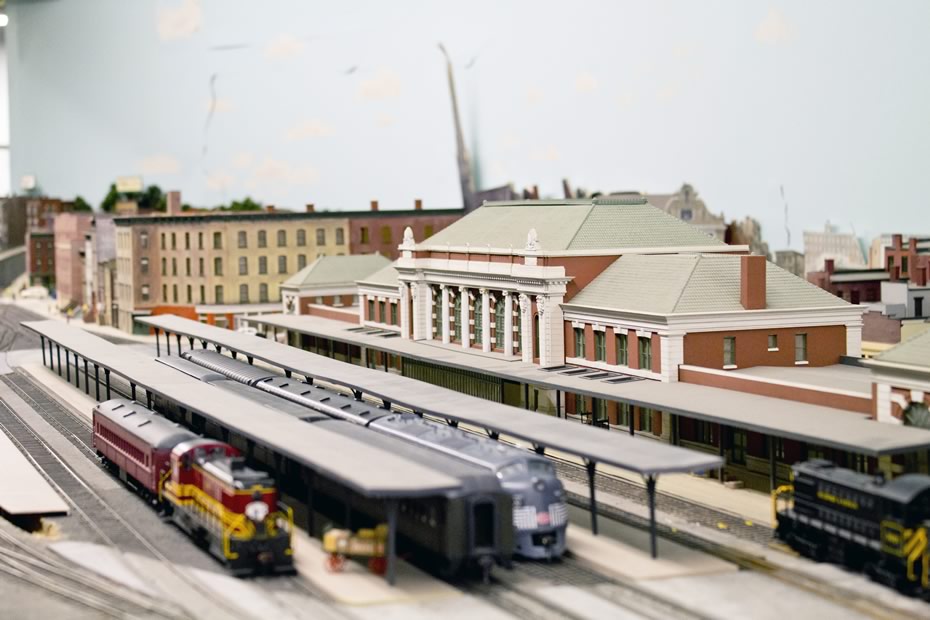


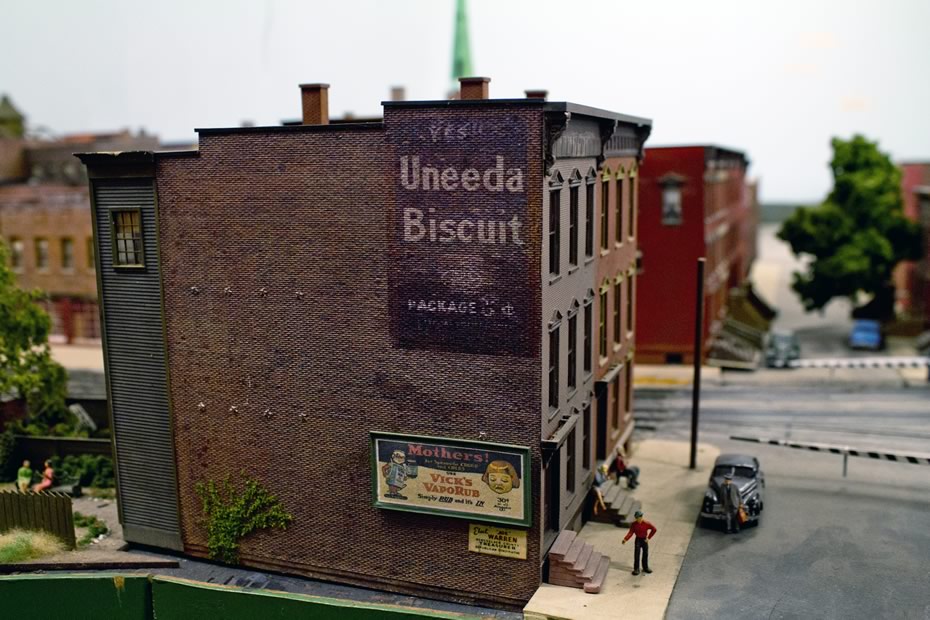
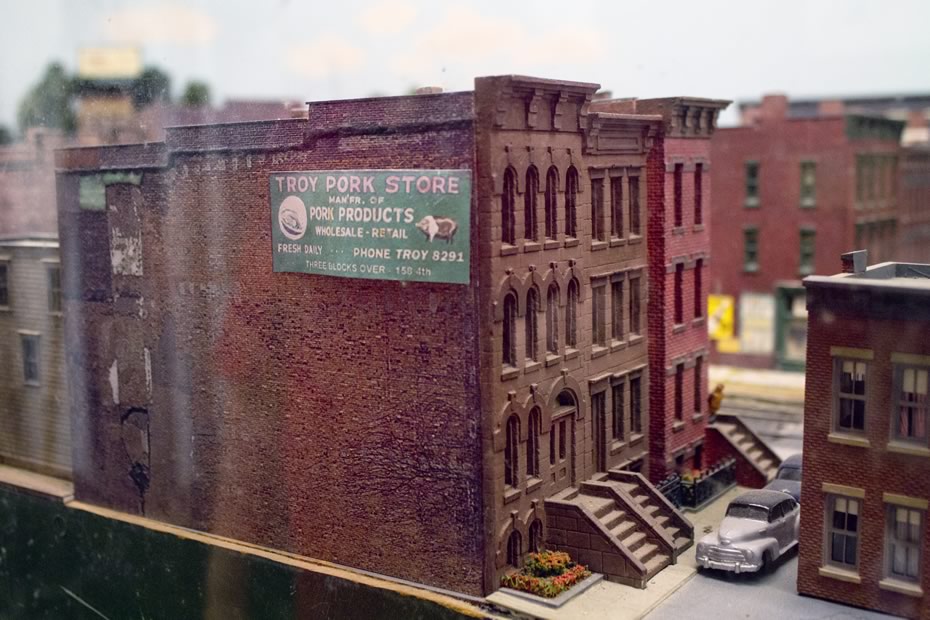
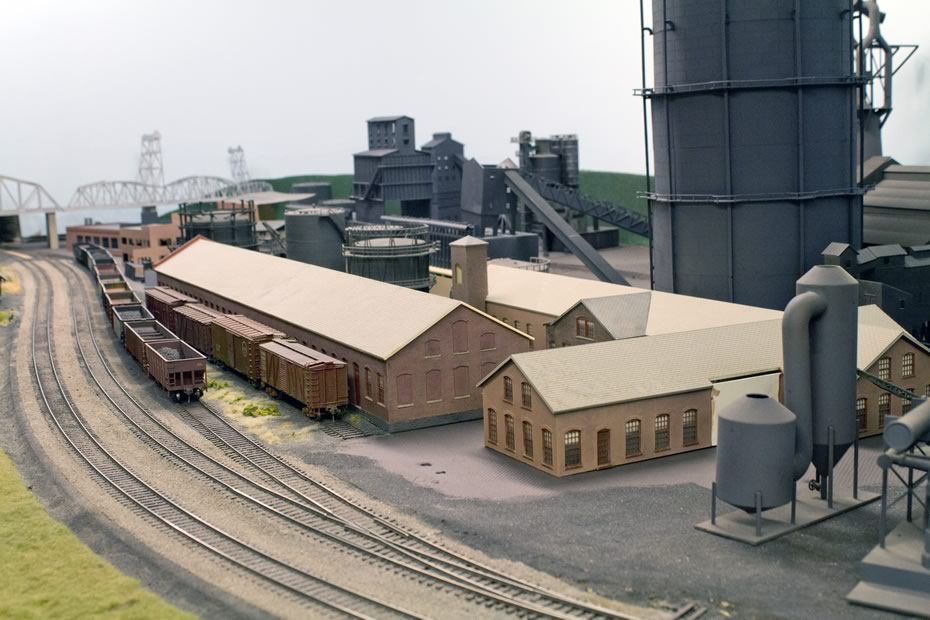


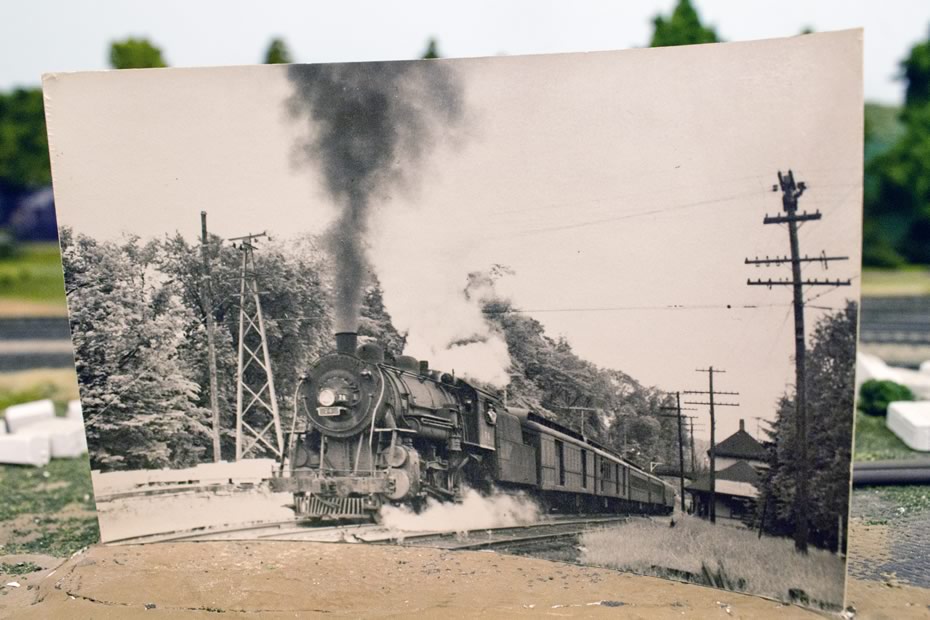

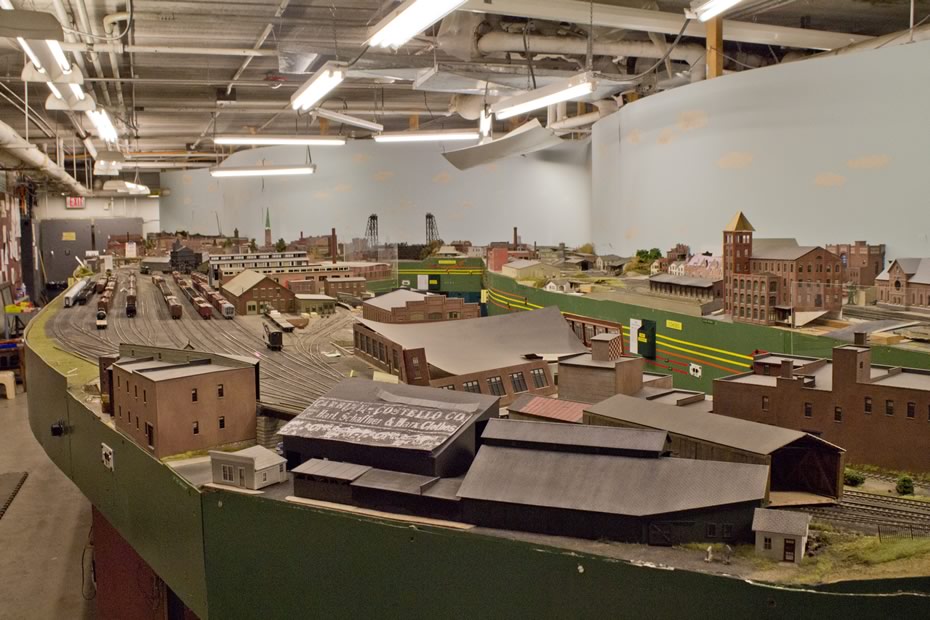
Comments
I remember going to see that when I was a little kid (circa 1980). I had no idea that it was till around.
... said Tim on May 12, 2014 at 2:56 PM | link
Extensive work on the layouts was already in progress when I was a freshman in 1973, and back then it looked like it would take a generation to complete. Every few years I go back to take a look, and it still seems like completion is a generation away. As you can see from the select photos in this article, the detail is exceptional, as well as the size of the model. It's well worth visiting.
... said PaulBuckley on May 12, 2014 at 6:34 PM | link
Wow. Incredibly impressive.
... said Mike on May 14, 2014 at 9:16 AM | link
Interested in becoming a member
... said Paul Fote on May 14, 2014 at 10:17 AM | link
Love the layout!!! Especially the urban areas and Union Station. Great work.
I usually pride myself of being able to identify the kits used, but for the life of me I cannot tell which ones were used to create the row houses in the 3rd photo from the top - looks like similar kits are shown in the 5th photo. I can see that the stairs used were taken from IHC's Homes of Yesterday and Today series, but how about the actual buildings? Some custom work done here? Thank you in advance.
... said Ernest Pecounis on Nov 9, 2018 at 2:04 PM | link